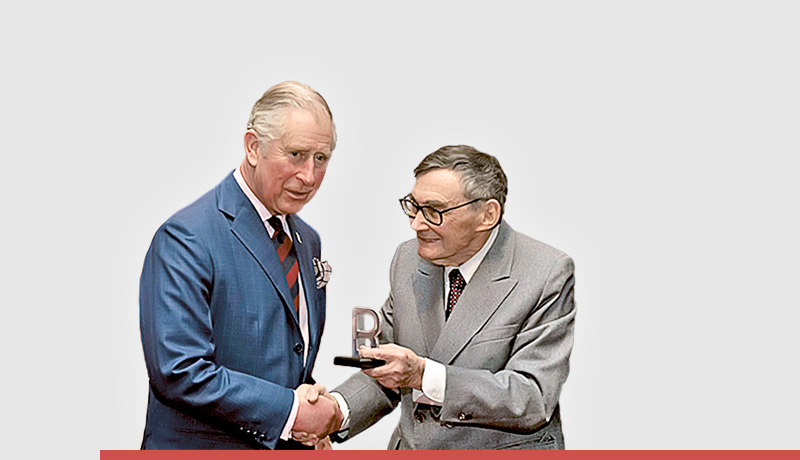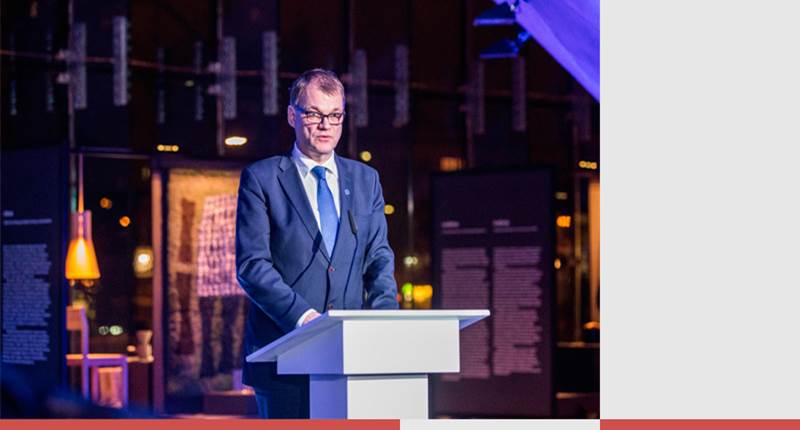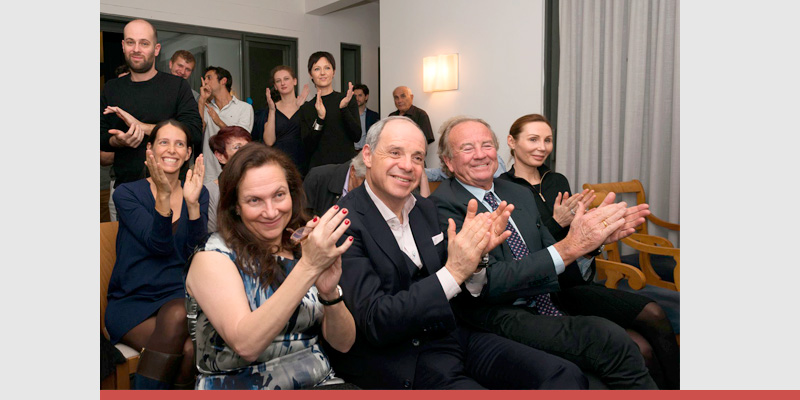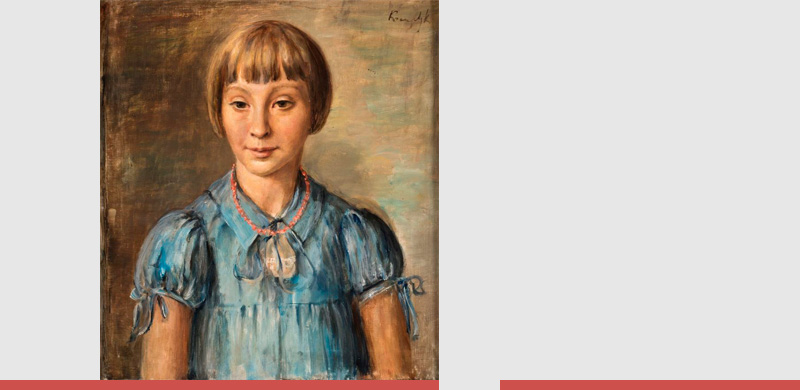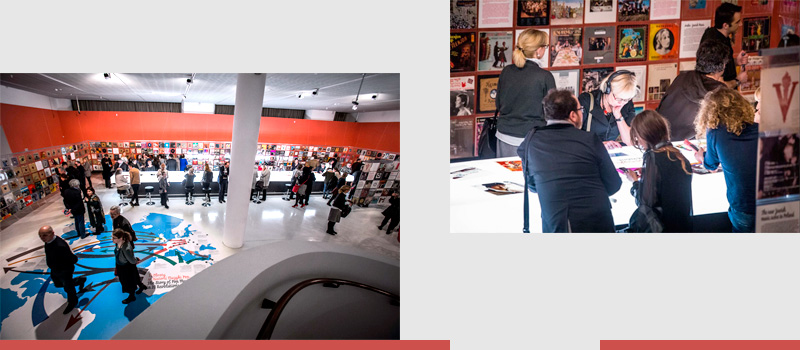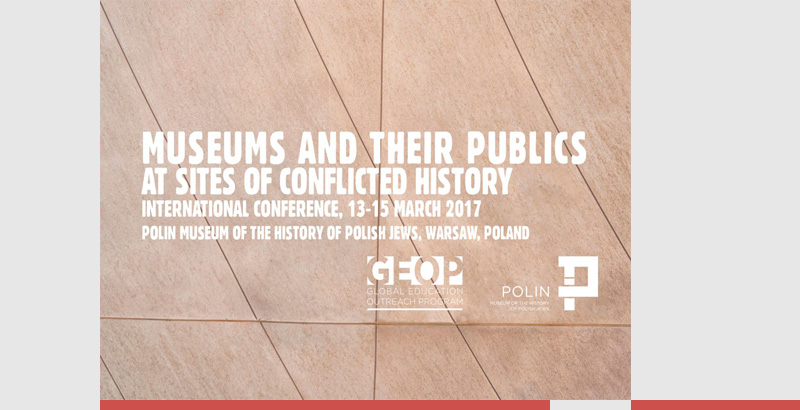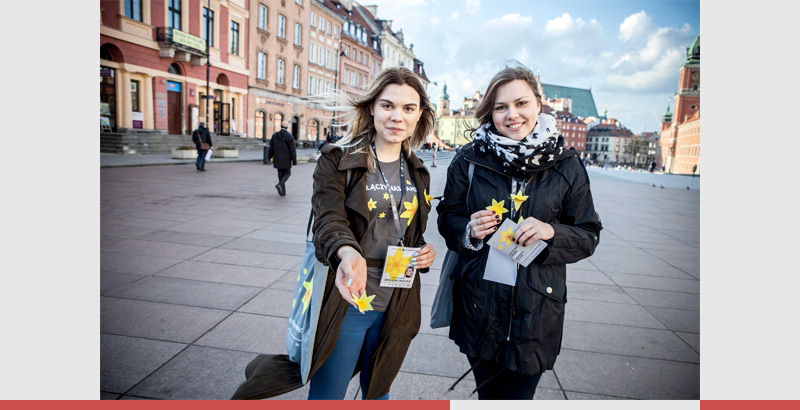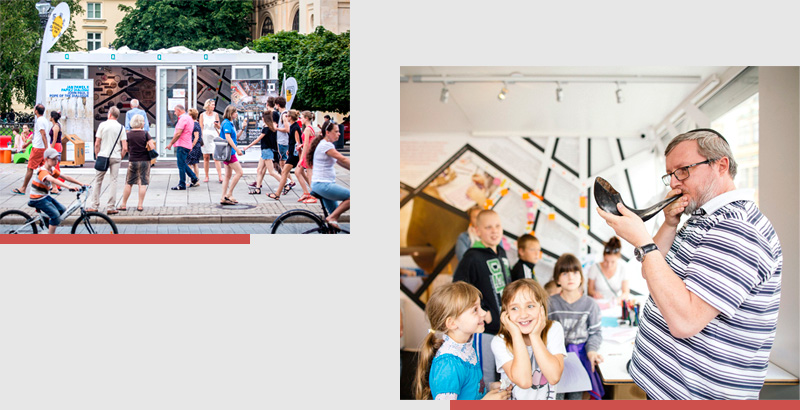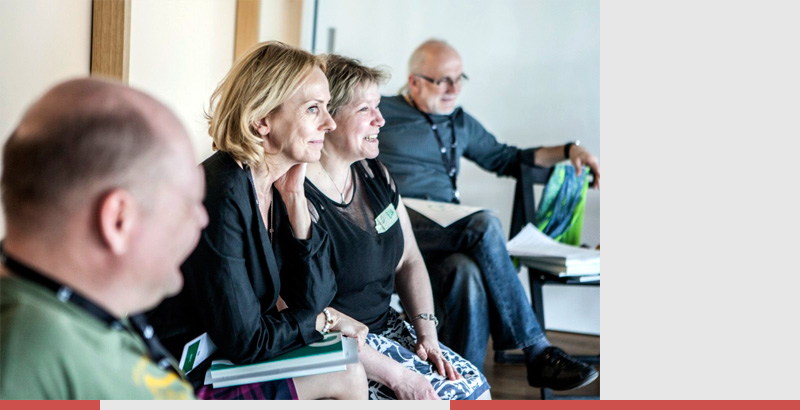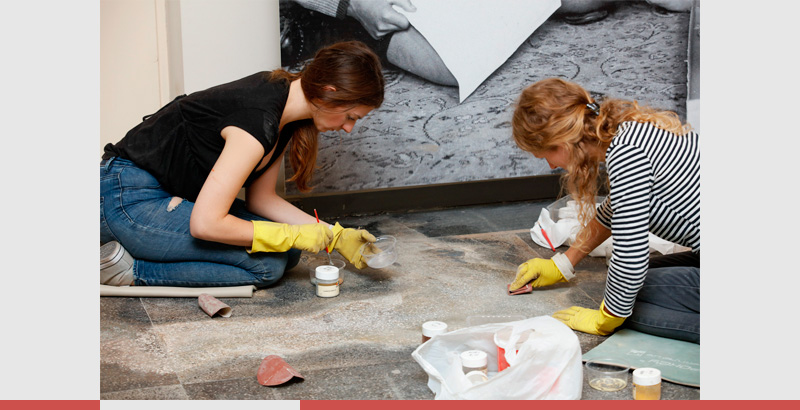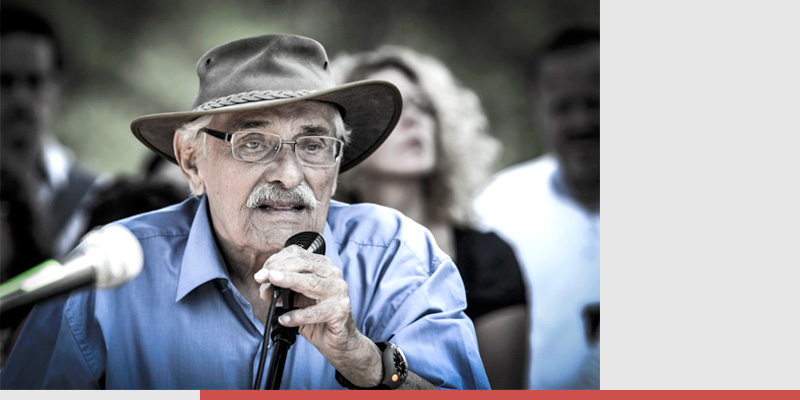|
Tenth Anniversary of the
|
Honorary Doctorate for Professor
Barbara Kirshenblatt-Gimblett
Professor Barbara Kirshenblatt-Gimblett was honored by the University of Haifa with the title honoris causa. The university justified the decision with the following statement:
This award reflects Professor Kirshenblatt-Gimblett’s position in the research community as an original and talented researcher, whose groundbreaking and interdisciplinary work has had an impact on many disciplines, such as anthropology, folk art, and Jewish history and culture... This award is also a tribute to Professor Kirshenblatt-Gimblett’s creativity in combining reliable and innovative research studies with her professional work in the field of culture, culminating in a leading role in the creation of the core exhibition of POLIN Museum of the History of Polish Jews in Warsaw.
Professor Kirshenblatt-Gimblett was recently nominated to the jury for the prestigious European Museum of the Year Award (EMYA). This is the most important prize awarded annually to outstanding museums in Europe. The winner holds The Egg, a sculpture by the celebrated English artist Henry Moore, for the year of the award.
We extend our heartfelt congratulations to Professor Kirshenblatt-Gimblett!
POLIN Museum's Frank Stella Exhibition Ranked
Among the World’s Top 15 Exhibitions in 2016
The temporary exhibition Frank Stella and Historic Synagogues of Poland was named one of the world's top 15 art exhibitions in 2016 by Hyperallergic, an American online art magazine, with 70,000 subscribers. POLIN Museum featured works from Frank Stella’s Polish Village series, each of which is named after the town in prewar Poland whose wooden synagogue inspired it. Stella’s work was shown together with pre-war photographs and scaled architectural drawings of the synagogues.
|
POLIN MUSEUM OF THE HISTORY OF POLISH JEWS |
|
|
|
Roman Kramsztyk, Portrait of Joanna Kramsztyk, circa 1933 |
Acquisition Fund – To Enrich
POLIN Museum’s Art Collection
Portrait of Joanna Kramsztyk, painted around 1933 by Roman Kramsztyk, was gifted to POLIN Museum in January by the sons of Joanna Prochaska neé Kramsztyk. This delicate portrait is characteristic of Kramsztyk’s artistry: subtle color, gentle expression, keen observation, and a sense of humor. Warsaw’s famous Kramsztyk family previously donated other objects, including ones related to Andrzej Kramsztyk, an attorney, which were exhibited in Biographies of Things. Gifts in the Collection of the Museum of the History of Polish Jews. Roman Kramsztyk was fatally shot on the streets of Warsaw during the first liquidation action in August 1942.
Development of the art collection is a high priority for POLIN Museum. The acquisition of objects and works of art will enable us to enrich the core exhibition and provide a basis for temporary exhibitions, research, education, and cultural programs. With your support, we can establish the POLIN Museum Acquisitions Fund. We invite you to be part of this special endeavor.
|
|
|
. |
Temporary Exhibition –
Welcome to the World of Music
Since early February, Jukebox, Jewkbox! A Jewish Century on Shellac and Vinyl, POLIN Museum’s latest temporary exhibition, has been taking visitors on a musical journey through the 20th century. Featured are the composers, lyricists, performers, record producers, and inventors who created the music that millions of Jews the world over love and remember to this day. POLIN Museum’s curator Dr. Tamara Sztyma adapted the exhibition prepared by the Jewish Museum Hohenems in 2014. A special section is devoted to the story of this music in Poland and is accompanied by its own catalogue. Dr. Hanno Loevy had this to say:
The Warsaw Museum . . . did a wonderful job in extending our show with a large presentation of Polish interwar musical culture, a portrait of a time when cultural influence from all over the world merged with Polish traditions, and Jewish artists were leading figures of show business all over the country. Poland after the First World War had been back on the political map, but also on the map of world cultures.
— Dr. Hanno Loevy, Director, Jewish Museum Hohenems and Exhibition Curator
The exhibition closes on 29 May 2017. The Association of the Jewish Historical Institute is one of the exhibition’s partners. We invite you to view and most of all to listen!
|
|
|
. |
Global Education Outreach Program
– Cooperating with the Best!
POLIN Museum’s Global Education Outreach Program (GEOP) organized an ambitious international conference in partnership with Birkbeck University of London, Concordia University, New York University, University of Warsaw, and with the financial support of the Polish Ministry of Science and Higher Education. More than 200 participants explored the role of museums in negotiating new public histories in societies that are in transition, as old narratives and historical policies are questioned, and stories once silenced are given voice. Of special interest is how the construction of historical narratives in museums helps shape new social relations in the dynamically changing present.
The conference featured four distinguished international keynote speakers: Professor John H. Falk, Professor Slawomir Kapralski, Professor Nelia Dias, and Professor Eyal Naveh.
About our keynote speakers: www.polin.pl/en/key-note-speak ers
The Global Education Outreach Program (GEOP), supported by the William K. Bowes, Jr. Foundation and Taube Philanthropies, is dedicated to developing a new generation of scholars in the fields of Polish-Jewish studies and museum studies. GEOP hosts conferences, workshops, visiting scholars, doctoral seminars, and research fellows.
|
|
|
Over 60,000 daffodils were distributed to |
Daffodil Campaign Commemorating
the 74th Anniversary of the Warsaw
Ghetto Uprising
For the fifth year, POLIN Museum will be organizing the Daffodil Campaign, an educational program and social movement inspired by Marek Edelman, a leader of the Warsaw Ghetto Uprising, who would leave yellow daffodils at the Monument to the Ghetto Heroes every year. The aim of this campaign is to pay tribute to the victims of the Holocaust through commemorative events related to the Warsaw Ghetto Uprising.
Next year we will celebrate the 75th anniversary of the Warsaw Ghetto Uprising, probably one of the last round anniversaries attended by those who participated and witnessed those events. The 2018 commemorations will be organized in cooperation with Jewish institutions and accompanied by a rich cultural and educational program. Sinfonia Varsovia and the National Symphony Orchestra of Polskie Radio will perform at an outdoor concert for at least 2,500 people. We encourage you to support these activities!
The Association of the Jewish Historical Institute expresses special thanks to T-Mobile, a partner of the Daffodil Campaign 2017.
Education – Stop Hate!
The educational course Stand Up To Violence lasts from January to March as part of the nationwide HejtStop campaign. It is devoted to combatting discrimination and hate speech – how to respond and how to prevent xenophobia. Where can we find role models? Meetings, discussions, and the exchange of experiences aim to help participants take concrete actions. A virtual exhibition dedicated to contemporary Righteous activists, who oppose violence in different parts of the world today, offers inspiration for future actions.
|
|
|
. |
Museum on Wheels
on the Road Again
Six new towns, over 40 social events, and about 10,000 viewers of various ages – that’s what’s anticipated for the 5th season of the Museum on Wheels exhibition. The exhibition is on the road from March.
POLIN Museum, in cooperation with local partners, has prepared a rich cultural and educational program to educate residents about the history and former Jewish inhabitants of their towns and to raise such topics as coexistence in a multicultural society and attitudes to the “other.” In January 2017, during the Days of Judaism in Gniezno, the Museum on Wheels welcomed around 850 visitors, including students and representatives of the town and the Catholic church. This exhibition will be presented during two large festivals this June: the Life Festival Oswiecim and the Youth Meeting Lednica.
Since the inauguration of this project in June 2014, the Museum on Wheels has visited 65 towns, with a total of 85,000 viewers and event participants.
The 2017 edition of Museum on Wheels is supported by the Koret Foundation in honor of Tad Taube.
|
|
|
. |
Programs for Teachers
and Specialists
Study visits for teachers from all over Poland during the spring and summer at POLIN Museum, one of the best museums in Europe, will prepare teachers to make the best use of POLIN Museum’s core exhibition and other resources. Their visit to POLIN Museum will serve as an introduction to the history of Polish Jews and help them prepare their students for a visit to POLIN Museum.
We are also continuing our anti-discrimination training for professionals, including employees of the police department, the courts, and schools across Poland. Our approach is to make historical education the basis for sensitivity training and to expose the mechanisms at the root of discrimination.
Thanks to the support of Phyllis Cook, we are also able to prepare these materials in English for American educators.
Artist Residencies at
POLIN Museum
Hagar Cygler, an Israeli artist with Polish roots, carried out a project dealing with the collective memory of Polish-Jewish relations. Focused on objects that are old, forgotten, and often useless, one that she found at local flea markets, she asks: Do they have any strength today? Do they hold any personal or collective memory? Do they deserve to be remembered?
The Poland Retreat for Jewish Artists on February 5-8 was organized jointly with Asylum Art, New York. An international group of more than 40 Jewish artists from various disciplines were exposed to the history and culture of Polish Jews. Their goal was to form a creative community.
|
THE EMANUEL RINGELBLUM JEWISH HISTORICAL INSTITUTE |
|
|
|
Conservation of the historic lobby floor of the Tlomackie 3/5 building, |
Honoring the Legacy of Emanuel
Ringelblum and the Oneg Shabbat team.
A Permanent Exhibition to open
in November 2017
Work is underway on a permanent exhibition dedicated entirely to the Ringelblum Archive and its creators, members of a clandestine team, Oneg Shabbat (Hebrew for Joy of Sabbath). The exhibition production team, led by Professor Pawel Spiewak, director of the Jewish Historical Institute, is choosing from thousands of unique documents, drawings, and photographs, which will be presented to a wide audience for the first time. The exceptional value of this archive for humanity was recognized by UNESCO, which inscribed the Ringelblum Archive in the Memory of the World register. The opening is scheduled for November 2017.
The Association of the Jewish Historical Institute has mounted a fundraising campaign in Poland and abroad: An Archive More Important Than Life. Funds for the exhibition are now in place. Funds are also being raised for the English translation of the archive. Fundraising continues for the revitalization of the historic hall of the building at Tlomackie 3/5, which belongs to the Association of the Jewish Historical Institute. This is where the Oneg Shabbat team used to meet and to work in secret. Before the Second World War, the building was home to the Main Judaic Library and the Institute of Judaic Studies, which were part of the complex of the Great Synagogue on Tlomackie. The building survived the destruction of the Great Synagogue, but the floor of the historic main hall still bears traces of fire, which today symbolizes the liquidation of the Warsaw ghetto. Since 1947, this building has housed the Jewish Historical Institute and its greatest treasure, the Ringelblum Archive.
Commemorating
Operation Reinhardt
This year marks the 75th anniversary of Operation Reinhardt, the mass annihilation of European and Polish Jews in death camps built by the Germans in occupied Poland. An outdoor educational installation will open on Nalewki Street on 20 May 2017. The presentation of archival photos and historical press clippings will raise awareness of this vibrant Jewish street, an icon of Jewish Warsaw. The original Nalewki Street is no more. Nalewki Street today refers to new little street, and a plaque explaining the street’s name makes no mention of Jews. Nearby, a deserted stretch of the original Nalewki preserves a fragment of tram tracks, which leads nowhere, and the street itself has been renamed Ghetto Heroes Street.
This installation will be a place for educational and cultural activities by educators and researchers from the Jewish Historical Institute until November.
|
|
|
. |
DELET IN THE MAKING
The DELET (Hebrew: door) web portal will showcase the most treasured collections of the Jewish Historical Institute and the Association of the Jewish Historical Institute. A unique art collection assembled by Józef Sandel and his colleagues will be included. He gave this collection to the Jewish Historical Institute and served as head of its museum between 1950 and 1953. DELET will also include the Ringelblum Archive (manuscripts, reports, literary works, photographs, and works of art), handmade albums from the Warsaw and Lodz ghettos, the Esther scroll collection, and Jewish religious objects.
DELET will provide access to these collections and encourage viewers to explore these materials in greater depth with the help of curatorial explanations. Educators will be able to use these materials in teaching with the help of the lesson plans provided. Visitors will be able to compare scans, change image parameters, create their own collections, and add their own notes. An accompanying mobile application will serve students of all ages as well as educators. Visitors can also create and share their own curated and educational materials, as well as conduct advanced research work with its collections.
DELET portal is a co-production of the Jewish Historical Institute and the Association of the Jewish Historical Institute. The official launch of the portal is planned for the end of 2017.
|
|
|
Samuel Willenberg (1923-2016) |
The second edition of Samuel Willenberg’s
memoir, Revolt in Treblinka
One year after the death of Samuel Willenberg in 2016, the Jewish Historical Institute published the second edition of Revolt in Treblinka, which first appeared in Hebrew in 1986 and in Polish in 2004. This latest edition includes a 2015 description of his postwar activity and his conversation with Professor Pawel Spiewak in Tel Aviv in May 2004.
Samuel Willenberg was born in 1923 in Czestochowa. After the outbreak of the Second World War, he volunteered for the Polish Army, but was seriously wounded in a battle with Red Army troops on 20 September 1939. He was placed in the Opatów ghetto with his family in 1940. On 20 October 1942, he was sent to the Treblinka extermination camp, where he was assigned to the Sonderkommando, a unit of prisoners who were forced by the Germans to service the camp. In a place where thousands of lives only lasted minutes, Willenberg made it through nine months. On 2 August 1943, he took part in a prisoner revolt at Treblinka. He managed to escape the camp and lived in hiding in Warsaw for the next year. After the outbreak of the Warsaw Uprising, he fought in the ranks of the Home Army.
Willenberg emigrated in 1950 to Israel, where he was educated and worked as a surveyor for the Ministry of Reconstruction. He turned to art after retirement, and created a series of expressionist sculptures represented scenes of the concentration camp operations, as well as of the Treblinka camp uprising.
Samuel Willenberg was one of the survivors, who, despite his wartime trauma, bore witness to the Holocaust and warned against the consequences of nationalism, antisemitism, and totalitarianism. He came to Treblinka several times to meet with youth and to answer questions.
He was our dear friend. May his memory be a blessing.
THE ASSOCIATION OF THE JEWISH
HISTORICAL INSTITUTE OF POLAND
The Association of the Jewish Historical Institute of Poland is a Jewish philanthropic organization in Poland dedicated to preserving and commemorating the history and culture of Polish Jews and their contribution to world culture. The Association’s statutory objective is to support the Emanuel Ringelblum Jewish Historical Institute and POLIN Museum of the History of Polish Jews. The Association initiated POLIN Museum in 1993, ran a successful capital campaign, and produced the core exhibition. The Association continues to support the activities of the Jewish Historical Institute and POLIN Museum, as well as many other projects in Poland. We welcome you to join our efforts!
Association of the Jewish Historical Institute of Poland
Account No: PL 15 1240 6247 1787 0000 4980 0838
SWIFT code: PKOP PL PW
|

